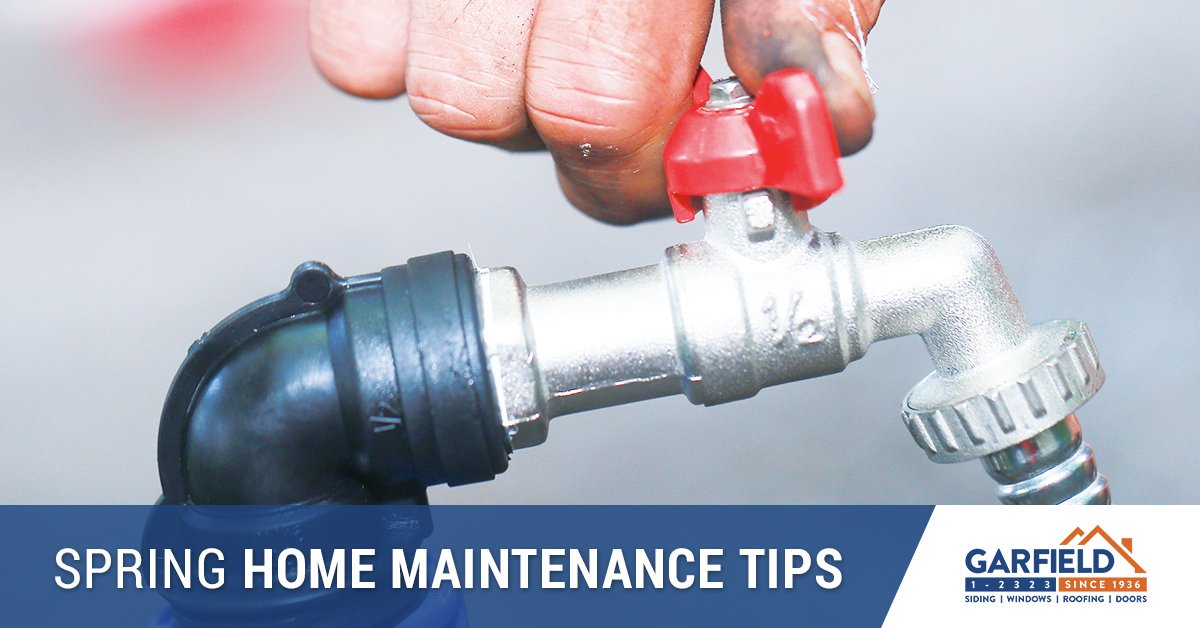04/20/2017
More Than Cleaning: 5 Spring Home Maintenance Tips

After months of cold weather, the spring season has finally arrived. For many of us, that means we’re no longer trapped inside of our homes. Spring is the perfect time for routine maintenance to check for any lasting effects the winter weather may have had on your home.
Check out our 5 spring home maintenance tips so you can make sure you are taking the right preventative measures to maintain the durability and quality of your home.
#1 Inspect Your Roof and Gutters
During the winter, damage can result from persistent ice and snow on the shingles. Your roof is your home’s first line of defense against water damage, so routine evaluations should be taken seriously.
When you evaluate your roof, look for any evidence of leaks and cracked, missing, or loose shingles. Consider having a roofing professional come to inspect the flashing around plumbing vents, skylights, and chimneys.
Gutters are meant to direct rain away from the home and roof. Clogged gutters can cause water damage that you may not even notice until it results in a costly repair. Make sure that all debris is cleared from gutters and ensure that downspouts are draining water away from the house foundation.
#2 Examine Windows and Doors
Cold winter temperatures can cause caulking to shrink, and can create cracks or gaps in your window seal or doorway. Repairing these will reduce utility costs as you try to keep your home cooler during the summer months.
Winter weather can also make weather seals harden or crack. If you noticed condensation in between the glass on your windows during the winter, this may indicate that your window weather seal has been damaged and needs to be replaced.
#3 Check the Chimney
Winter storms can have devastating effects on your chimney. Have any of the stones or bricks fallen off, or do you notice any vegetation growing? This may indicate that there was some water infiltration during the winter months, so be wary of possible water damage inside the home.
If you notice that your chimney is leaning or tilting, this may indicate foundation damage, and you will want to consult an expert immediately.
#4 Look for Leaks
During the winter months, pipes can become damaged due to freezing. Make sure you are looking for leaky faucets, clogged drains or sweaty pipes. Don’t forget to check underneath sinks to look at hose and pipe connections. Have you noticed water stains around the dishwasher? That could indicate you have a leak somewhere.
#5 Evaluate Your Siding
Sometimes during the winter, there is just one, single siding panel with damage. This is an easy repair; however finding the perfect shade to match your home can be troubling. At Garfield1-2323, we make it easy because we have about 5x more vinyl siding colors than the average competitor.
When it comes to siding, there are some small signs that can indicate potentially big problems. One thing you want to look for includes “waves” in the siding. This typically results from uneven material expansion during high temperature months, or if the siding material is simply too thin. It can also result if the siding was fastened too tightly during installation, or if the wall underneath is not straight. Regardless of how the waves got there, they could result in water damage and should be repaired.
Look for any signs of mildew or mold growth, paying particular attention to the areas beneath the paneling. Signs of mildew or mold beneath the paneling could indicate that water damage is developing under the siding. Depending on how long the water damage has been going on, your home walls could also be affected. Consult a vinyl siding expert to repair the damage or replace the siding all together.
Authored by Herb Schoen, President & CEO of Garfield 12323, The Home Corporation

